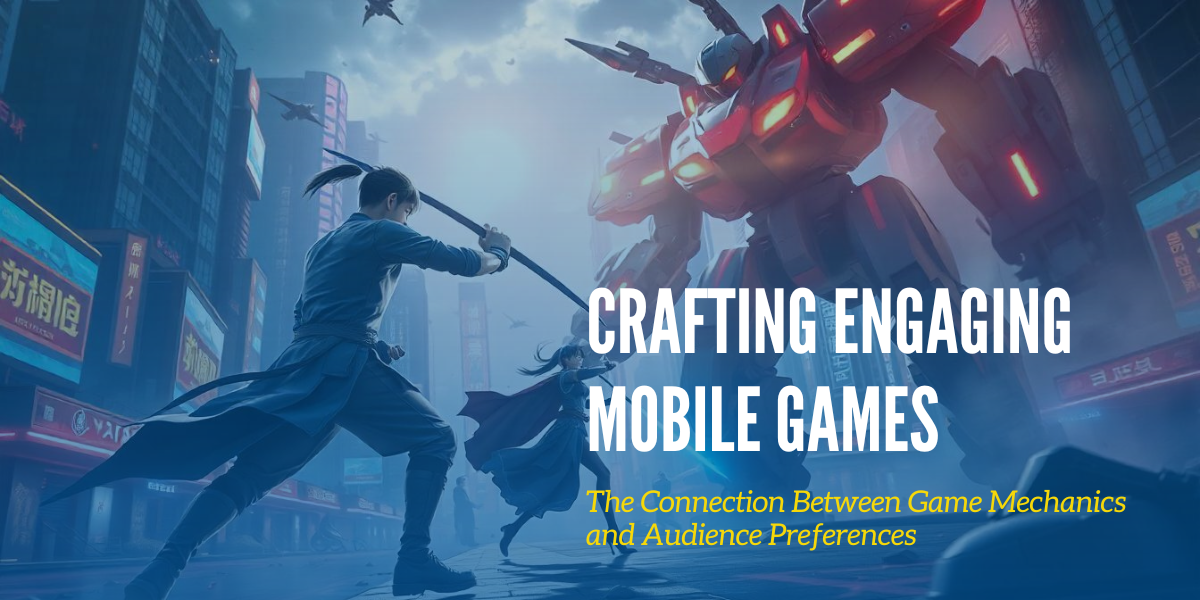Game mechanics are the fundamental elements defining how a game operates and how players interact. A deep understanding of your target audience and practical mechanics can create engaging and enjoyable gaming experiences. This blog post will explore the relationship between game mechanics and audience preferences, offering insights and activities to help you design games that resonate with players.
What Are Game Mechanics?
Game mechanics refer to the rules and systems that govern gameplay. They can be categorized into two types:
Core Mechanics are players’ fundamental actions in a game, such as scoring points, leveling up, or completing objectives.
Advanced Mechanics include more complex systems like resource management, player choices, and environmental interactions.
By understanding these mechanics, developers can create engaging gameplay that keeps players returning for more.
Analyzing Your Target Audience
Understanding your target audience is crucial for effectively tailoring game mechanics. Here are two key aspects to consider:
Demographics: Age, gender, and gaming experience can significantly influence how players engage with mechanics. For instance, younger audiences may prefer fast-paced, action-oriented games, while older players might enjoy strategy and puzzle games.
Psychographics includes players’ interests, motivations, and gaming preferences. Knowing what drives your audience can help you align game mechanics with their preferences, whether casual gamers looking for quick entertainment or hardcore gamers seeking profound, immersive experiences.
Aligning Mechanics with Audience Preferences
To create a successful game, it’s essential to align your mechanics with the preferences of your target audience. Here are some strategies:
– Casual vs. Hardcore Gamers: Casual gamers may prefer simple, intuitive mechanics that are easy to learn, while hardcore gamers might appreciate more complex systems that require strategic thinking and skill development.
– Feedback and Iteration: Utilize player feedback during development to refine mechanics. Playtesting can reveal what resonates with your audience and what needs improvement.
Case Studies
Examining successful games can provide valuable insights into how mechanics can effectively match target audiences. For example:
– Candy Crush Saga: This game caters to casual gamers with its simple mechanics and colorful visuals, making it accessible and enjoyable for players of all ages.
– Dark Souls: This game attracts hardcore gamers with its challenging mechanics and profound lore, appealing to those seeking a rewarding and immersive experience.
Engagement Activity
Create a Persona: Develop a persona for a specific target audience segment. Consider their demographics and psychographics, and outline game mechanics that appeal to them. For example:
– Persona: Sarah is a 28-year-old casual gamer who enjoys puzzle games.
– Preferred Mechanics: Simple point-and-click interactions, timed challenges, and engaging storylines.
Components of Mobile Game Design and Visuals
Visual Design:
Visual design is a critical aspect of mobile game development. It attracts players and enhances their overall gameplay experience. This section will discuss essential components of mobile game design and how to create visuals that captivate players.
Visual Design Elements
Understanding key visual design elements is vital for creating appealing mobile games:
– Color Theory: Colors can evoke emotions and influence gameplay. For example, warm colors like red and orange create excitement, while cool colors like blue and green promote calmness.
– Typography: Choosing the right fonts is essential for readability and aesthetics. Ensure the text is legible on small screens and complements the overall design.
– Icons and UI: Designing intuitive interfaces is crucial for mobile games. Icons should be easily recognizable, and the user interface should facilitate smooth navigation.
Art Style
The art style of a game significantly impacts player experience. Different styles, such as 2D, 3D, and pixel art, can evoke different feelings and attract various audiences.
– 2D Art: Often used in platformers and puzzle games, 2D art can create a nostalgic feel.
– 3D Art: Provides a more immersive experience, ideal for action and adventure games.
– Pixel Art: Appeals to retro gaming enthusiasts and can be more straightforward to produce.
Animation
Fluid animations are crucial for making a game feel responsive and engaging. They can enhance gameplay by providing feedback and guiding players through actions.
User Experience (UX)
Best practices for ensuring a seamless player experience include:
– Consistency: Maintain a consistent visual language throughout the game.
– Feedback: Provide immediate feedback for player actions, such as sound effects or visual cues.
Creating engaging and informative content for game development involves understanding key concepts such as game mechanics, visual design, character development, monetization strategies, and marketplace navigation. By exploring these topics and participating in the suggested activities, aspiring developers can enhance their skills and create successful mobile games that resonate with players.
